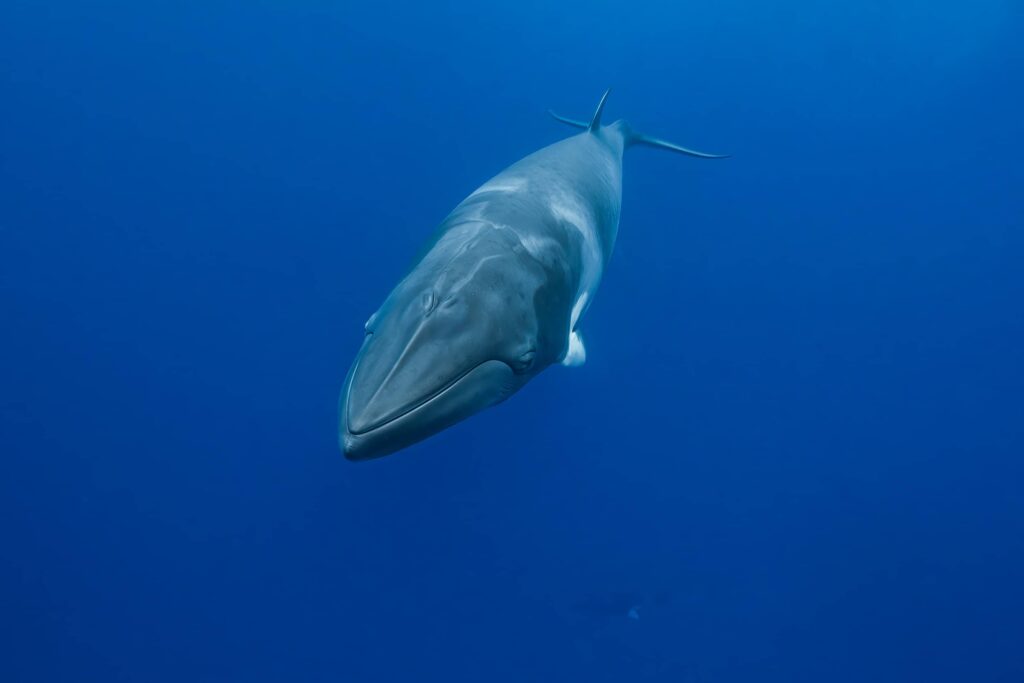
Minke whales are among the most fascinating creatures that roam the seas. These intelligent and gentle giants can be found every winter in far north Queensland!
I have been lucky enough to have seen these whales every year for the past 4 years, and I’m here to share how you can do it too!
The dwarf minke whales migrate to the northern Great Barrier Reef every June/July/August. The peak time for the Minke Whales is late June and early July. This is when you will have the best chance of seeing multiple whales for longer periods of time.
However, I have still seen Minke Whales outside of this time period. The Minke whales have been spotted as early as late May or early June and into late July or early August. But your chances of seeing the whales can be hit or miss.
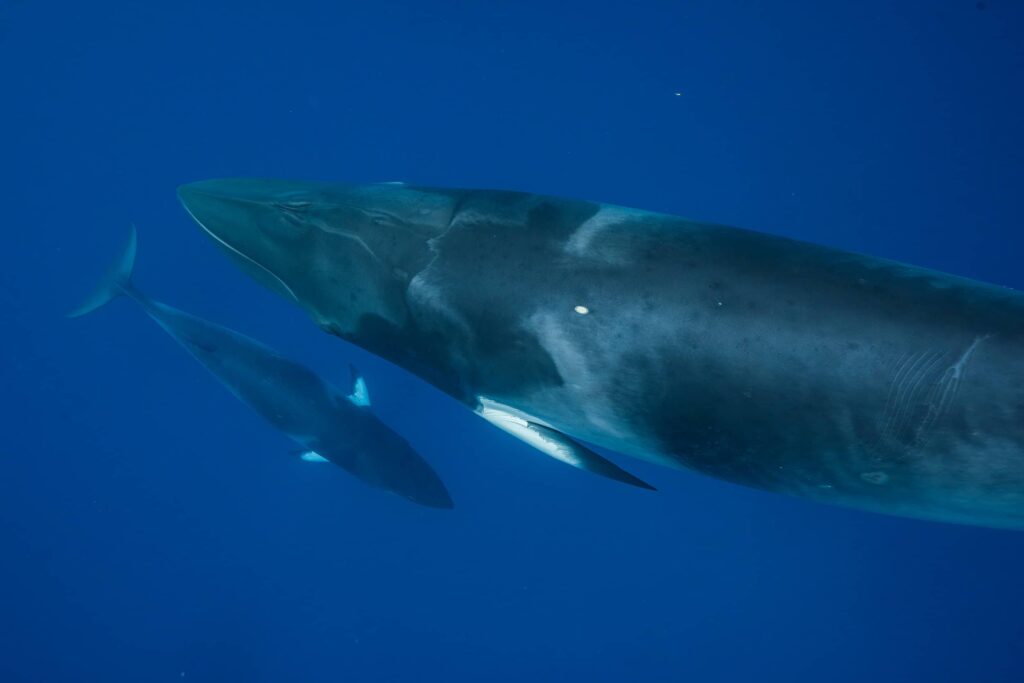
The Minke whale is a baleen whale and is the smallest member of the rorqual whale family, which includes humpback, blue, and Fin whales. They have streamlined bodies and can weigh up to 7,000 kg and reach a length of 10 meters.
If all you want to do is see a Minke whale then I would recommend getting yourself booked onto a liveaboard trip to up the Ribbon Reefs. This aggregation is remarkably predictable every year and you will have the best chance of seeing Minke whales at the Ribbon Reefs.
If you can’t get yourself on a liveaboard though, you still have a chance of seeing Minke whales on the day boats. I worked for Calypso Reef Cruises out of Port Douglas for 5 years and every year we have spotted Minke whales at Opal & Agincourt reefs. There is no guarantee though and it’s a matter of luck. One day we will see a Minke whale and the next we won’t.
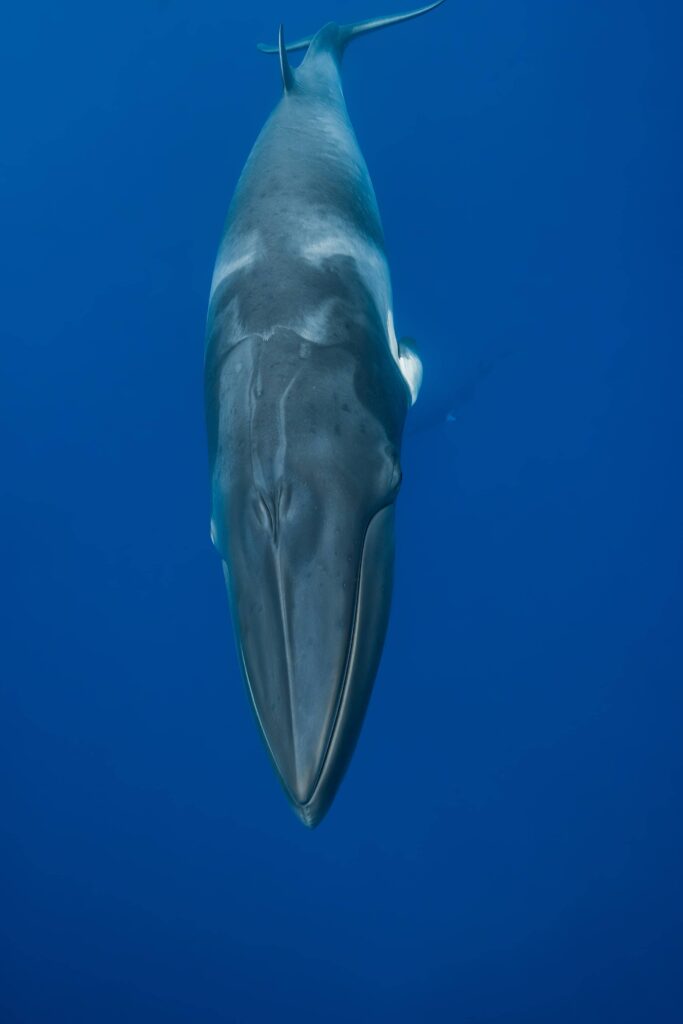
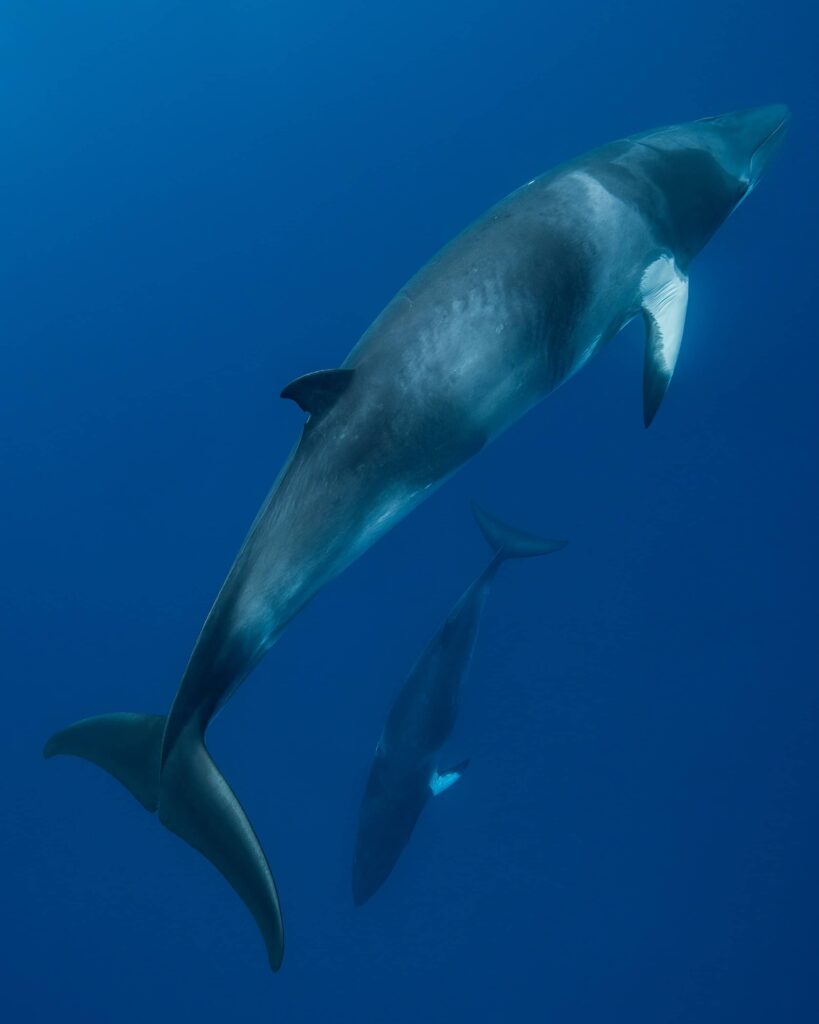
So if you are really keen get yourself to the Ribbon Reefs as that will be your best chance of being surrounded by Minke whales. My record was 8 at one time! To get to the Ribbon Reefs you will need to book a trip on a liveaboard, and make sure you pick a tour operator that has a permit to swim with Minke Whales.
I can recommend Mike Ball and ProDive out of Cairns. But my favorite trip so far was the Minke Whale trip I took with Scuba IQ last year. All the photos in this article are from that trip!
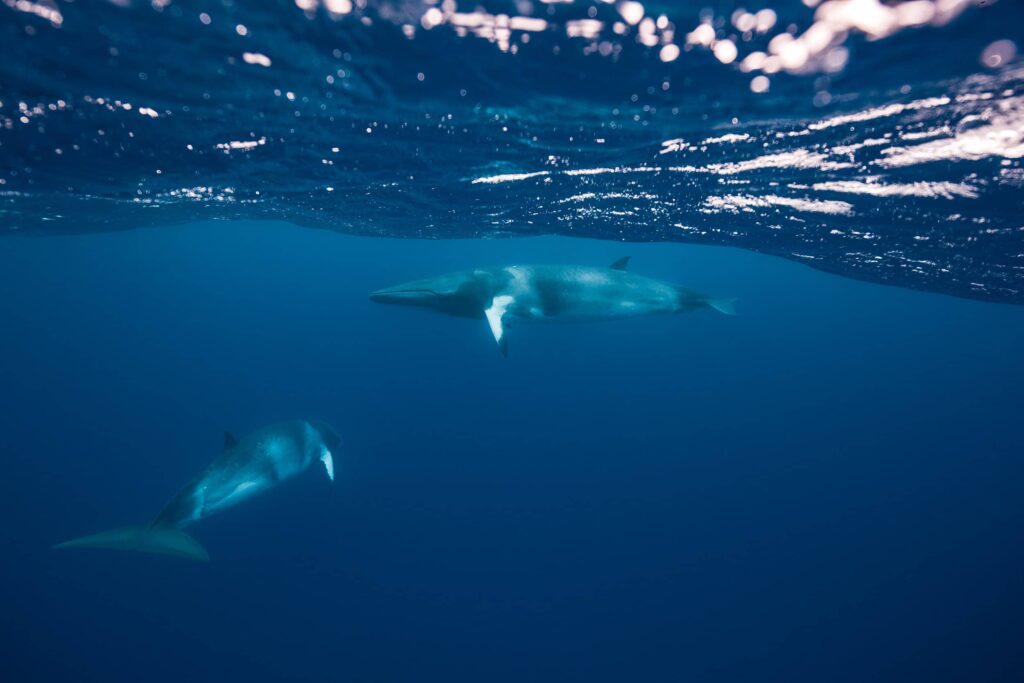
If you are looking for a trip that prioritizes snorkeling with Minke Whales, then I highly recommend the Minke Expedition with Scuba IQ. They plan the trip so that you are in the hotspots where Minkes are most likely to be found.
Their aim is to get as much time in the water with the whales as possible. It’s a fantastic option for snorkelers. For those of you that dive, there is also time set aside to scuba dive on some of the most well-known sites on the Great Barrier Reef!
Spotting and photographing Minke whales is an unforgettable experience! Here’s what you need to know to capture some stunning photographs of these magnificent creatures.
Do not use lights or strobes
Under the Code of Practice, no artificial light can be used to photograph the whales. Dwarf minke whales have large eyes that may be adapted for low light levels. Therefore they may be startled by camera flashes. But don’t worry, natural light is plenty for capturing a high-quality image. Pro Tip – try and have your back towards the sun, that way the sunlight is hitting the whale and you will get a much better photo!

Use a wide-angle lens
Minke whales are big and when they come in close, which they will, you will be happy you have that wide-angle lens. I always use a 15mm fisheye lens to photograph the Minke whales. This way I can fit the whale’s entire body in my frame. Minke whales are quite curious and if you stay in the water long enough they tend to get closer and closer.

Stay on the Line
If a Minke whale is spotted by your tourism operator and they have a permit to swim with Minke whales, then they will throw a line into the water. It is very important you stay on that line the whole time you are in the water. You can not chase after the whale, you may spook it and that whale might not come back. No freediving either! Minke whales are quite curious and if you stay calm on the line they can get quite close to you. Just remember not to touch them, it’s illegal!
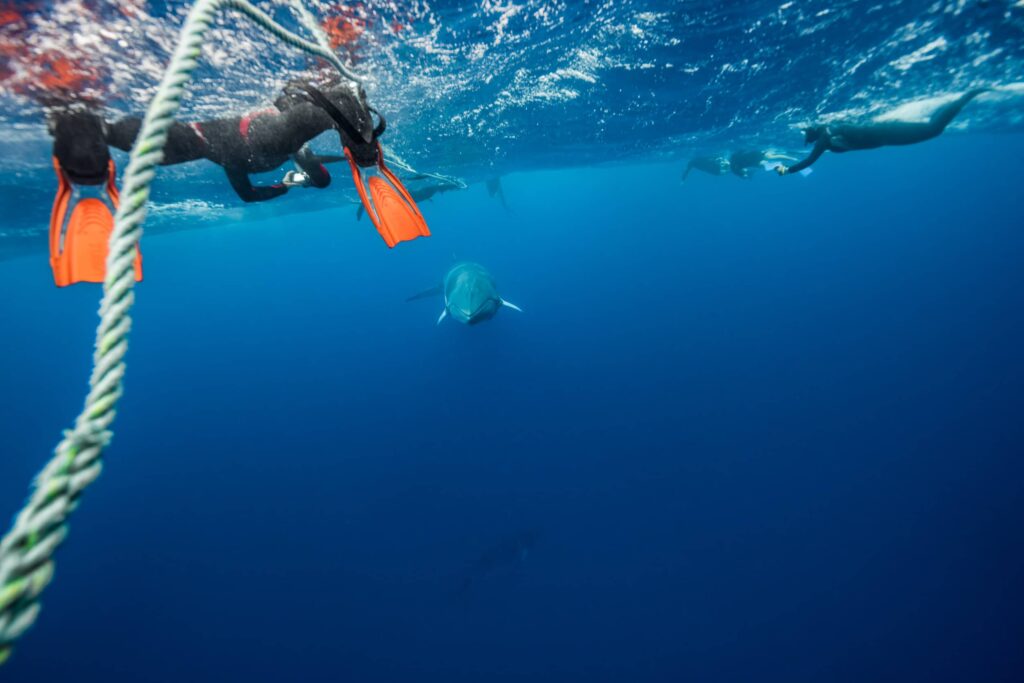
Now some lines have loops on them so you can put one arm through the loop while having both hands on your camera to take a photo. If there are no loops get creative, pinch the rope between your knees or clip onto the rope with an unweighted weight belt. You could even make your own quick-release tether. You just need to be physically attached to that line at all times. I advise staying calm, laying flat, and waiting for the whales to approach.
Keep your lens clean
The minke whales arrive in winter, which means the weather is not always perfect. The majority of the time there will be a lot of chop on the surface. You will be moving up and down and that will create small bubbles to form on your lens. Remember to keep brushing them off as you take photos and videos.
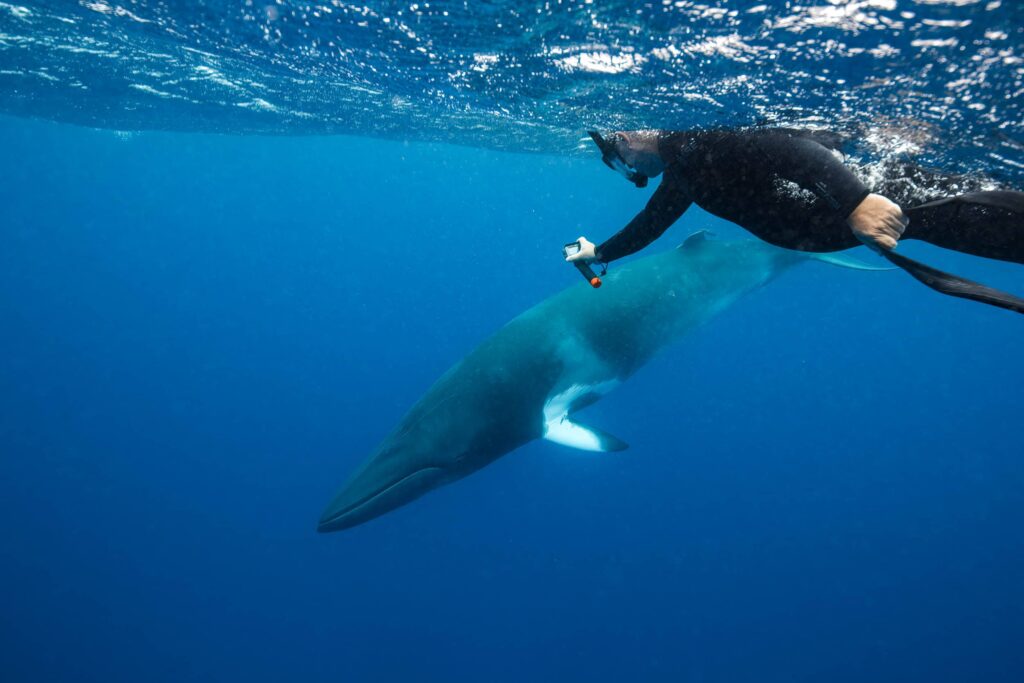
Use a fast shutter
The minke whales move slowly but you still want to have a fast enough shutter to capture the whale in focus. The line you will be hanging onto will be constantly moving you. So I would recommend your shutter speed be set to at least 1/160 of a second. Then from there, you can change your f/stop and ISO to create a balanced image with the amount of sunlight you have. If you don’t want to shoot manual, try shutter speed priority. The light will be changing constantly. In winter it could go from being sunny to cloudy in a matter of minutes.

Exposure Compensation
If you look closely you will notice a white patch on the whale’s shoulder and pectoral fins. On bright sunny days the chances of overexposing this white patch increase. To compensate for this you can use exposure compensation on your camera to underexpose by half a stop or more, depending on how sunny it is.
Camera Settings
Shutter Speed: Minimum of 1/125 of a second to avoid blurry photos.
ISO: Try and keep your ISO as low as you can. On a bright sunny day, ISO100 is ideal. Remember the higher your ISO the more noise you will have in your photos. But don’t be afraid to bump it up if you need to. I had very cloudy weather on this trip and these photos are all shot at ISO500 – 640. You can use different programs in post to minimize the noise in your images.
Aperture: My camera is a full-frame Nikon D810 and I like to start at f/8. To improve corner sharpness though you can use a smaller f-stop like f/10, but this all depends on how much sunlight you have to create a properly exposed image.
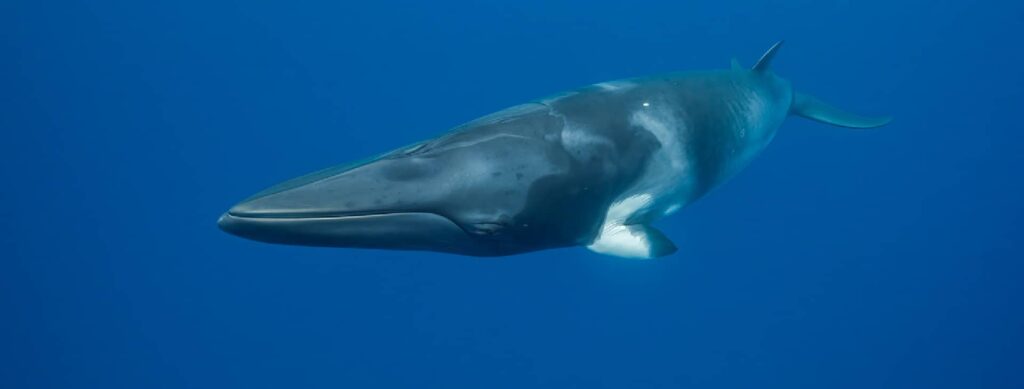
Expect to spend a long amount of time in the water
If you want to get the best photos you should be prepared to spend a lot of time in the water. Minke whale interactions can often last for hours! I am always the first one in the water and the last one out because nature is unpredictable. Patience is a virtue and you will be rewarded with the best experience. I also like to think the longer I’m in the water the more comfortable the whales become around me, but that’s just my opinion.
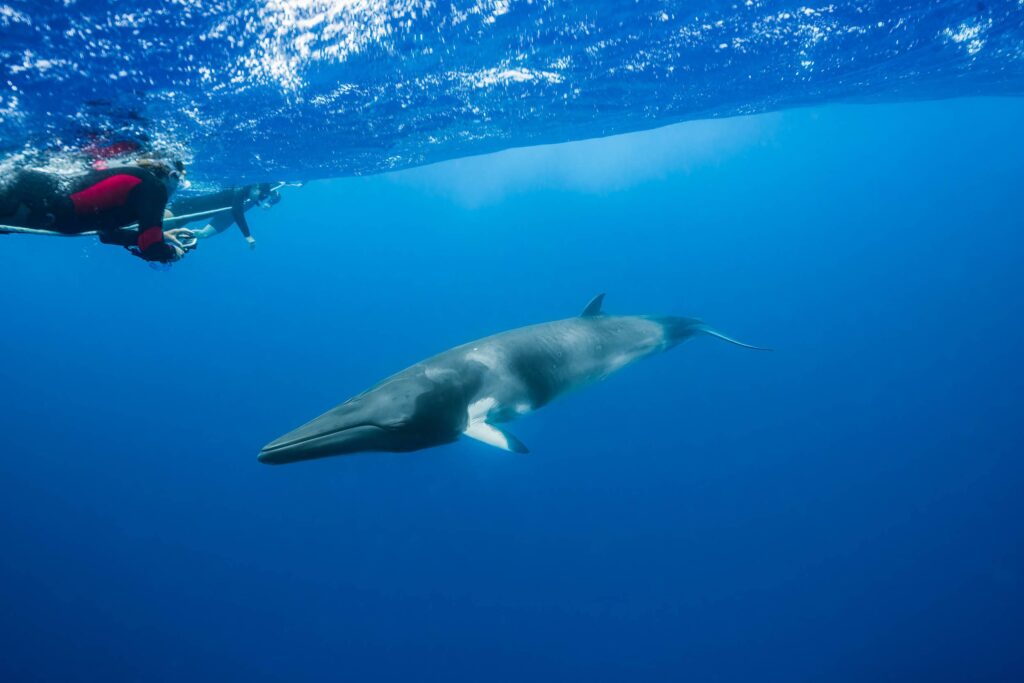
Final Thoughts
Minke whales are magnificent creatures and you have an excellent chance of seeing them in their natural habitat in far north Queensland. By following the tips above you will be able to take stunning photographs of these gentle giants. Just be mindful of their well-being.
It’s important to remember that these Minke whales are wild animals and you are a guest in their natural environment. Always be respectful and follow the rules to ensure that we can keep having these experiences with them.
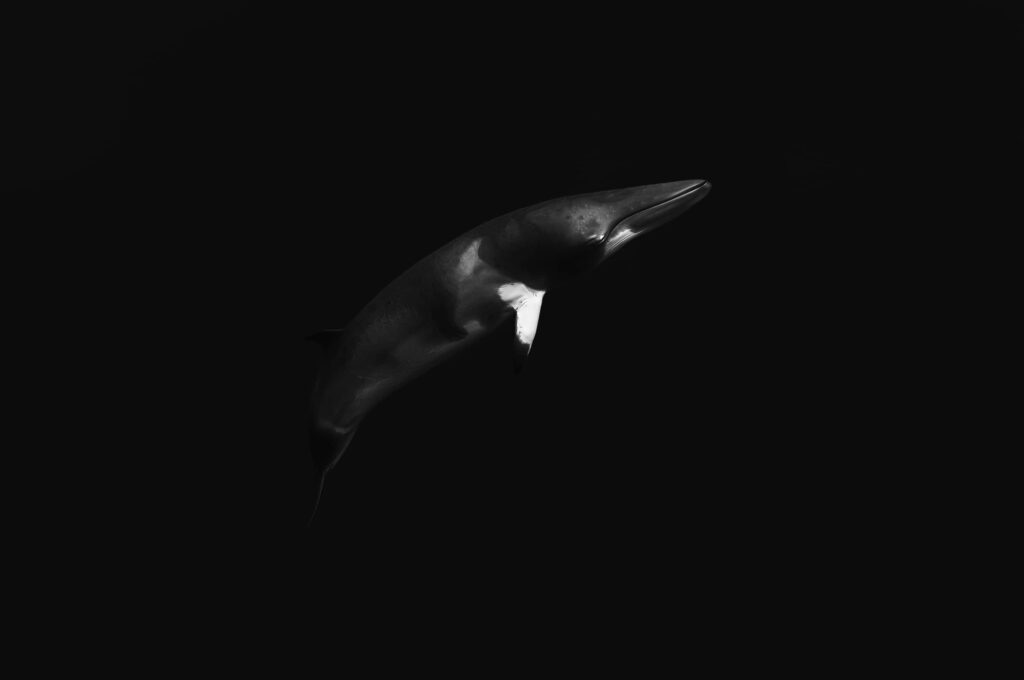
It’s amazing that Minke whales show so much curiosity toward humans and it truly is a privilege to experience snorkeling with them.
If you manage to capture any images on your Minke whale expedition please consider donating them to the Minke Whale Project. The MWP conducts multi-disciplinary research into dwarf minke whale biology and behavior.
They can identify individual whales using their natural color patterns. Since 1996 they have collected an archive of more than 100,000 still images! The MWP also studies the social and economic values of the whales and the sustainable management of swim-with-whales tourism.
You can join their Facebook group to share minke whale-related news, photos, stories & updates! Find them at “Friends of the Minke Whale Project” and share your highlights from your minke experience today!
0 Comments